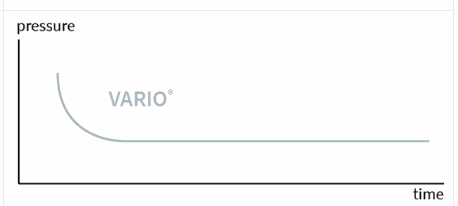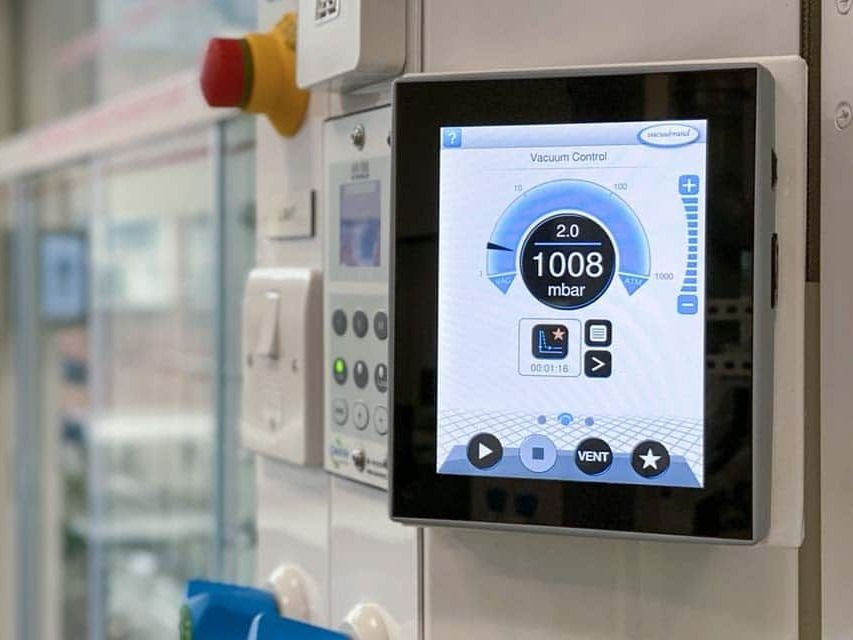WHICH TYPE OF VACUUM CONTROL IS RIGHT FOR YOU?
Controlling of vacuum as a process parameter has a significant effect on the process result. This is because vacuum correlates with the temperature and influences, for example, boiling points and phase transitions of substances. The role of a vacuum control system is to optimally adjust this parameter. But which one is best for your application? This article presents several options in general.

Controlling of vacuum as a process parameter has a significant effect on the process result. This is because vacuum correlates with the temperature and influences, for example, boiling points and phase transitions of substances. The role of a vacuum control system is to optimally adjust this parameter. But which one is best for your application? This article presents several options in general.
What are the different types of vacuum control?
Vacuum control is used to set and regulate the pressure parameter in your system. It affects how precisely you can operate your process. The following are several basic options for vacuum control:
a) Manual control
b) Two-point control
c) Adaptive VARIO® speed control
How precise are the individual types of vacuum control?

A) Manual control
You can only make a rough and indirect adjustment via a manual control valve. Depending on the valve type, you manipulate the effective flow rate from the application to the pump either by introducing air or by narrowing the cross-section. This allows you to regulate an approximate vacuum level. However, it is not possible to directly set an exact and constant pressure value. Depending on the application and requirements, this may be sufficient, such as in filtration applications, for example. In other applications, such as evaporation, manual control becomes a challenge. Mixtures of substances with different boiling pressures require the user to continuously readjust the control valve by hand. This requires a certain amount of knowledge and experience and continuous monitoring of the process. But even then, an individual vacuum process is difficult to manually control.
Manual vacuum control by means of a false air (bleed) valve:
Regulation via external air input
Oxygen from the air enters the system (possibility of undesirable reaction)
Increased flow velocities at the emission condenser at the outlet of the pumping unit result in reduced solvent recovery efficiency. Recommended only for aqueous media.
Significant interference between users in multi-user lab vacuum systems
Manual vacuum control by diaphragm valve:
Regulation via cross-section constriction (similar to e.g. water taps)
Only for simple applications that do not have high requirements for consistent vacuum levels.

B) Two-point control
A vacuum controller allows you to electronically establish an initial vacuum set point and use valve control with the switching points "Open" and "Close". If a set pressure is exceeded, the electromagnetically actuated valve opens to full flow. The system is evacuated until the value falls back to the set pressure. The vacuum simply "fluctuates" between the two valve switching points within the defined hysteresis range. A more precise adjustment is not possible. If you operate evaporations with two-point control, the first boiling point can be automatically detected, which is not possible with manual control. However, the pump runs continuously and does not react to boiling pressure changes in the sample vessel within the process. Only the first vapor pressure is detected, adapted as a permanent setpoint and maintained – the process may come to a standstill. Readjustment of the setpoint by the operator may be required during the process run.
Electronic vacuum control by vacuum controller and in-line solenoid valve:
Reliable process control
Multi-station supply with one pump possible
Pressure fluctuations due to technical hysteresis (valve switching points)
No uniform distillation possible

C) Adaptive VARIO® speed control with automatic boiling point detection
Speed control which incorporates an automatic function can help you with your work in many cases. This type of control is particularly advantageous because it adjusts the pump’s motor speed as required. This allows pressure values to be set continuously and efficiently with pinpoint accuracy. The pump adapts to the desired vacuum at all times and only run as fast as required. Another advantage, especially for evaporations is that the fully automatic vacuum controller not only finds different boiling point levels, but also continuously to changing process conditions thanks to the unique vapor pressure tracking system. In this way, you can achieve the best results in the shortest possible time at the touch of a button, without the need for monitoring and intervention.
Automatic vacuum control by vacuum controller and VARIO® speed-controlled vacuum pump:
Regulation via motor speed
Hysteresis-free, precise vacuum control
High process reliability
Longer service life of diaphragms and valves
Less power consumption
Low noise level

Integrated or additional vacuum control?
Existing systems or integrated equipment can also determine your choice of vacuum control. Often a simple control is already integrated in the systems such as can be the case with rotary evaporators, vacuum drying ovens or freeze dryers. Then there is the possibility to alternatively add a vacuum control via the pump. If the vacuum pump is an integral part of a larger system, it becomes necessary that the vacuum controller can be incorporated and controlled via the network.
What specific vacuum control products are available?
At VACUUBRAND, we offer you different product variants depending on your individual requirements. With these you can flexibly choose your desired vacuum control function:
Basic version
Variants without or manual control
Variants with two-point control
Variants with automatic VARIO® vacuum control
Our basic models focus on the actual core component – the vacuum pump. If you would like to retrofit a vacuum control system, this is possible with our accessories.
The variants without or manual control include such features as an inlet separator (AK) to protect against droplets and an emission condenser at the outlet for almost 100 % solvent recovery. These product variants can also be supplemented with two-point vacuum control.
In the variants with two-point control, a vacuum controller is already installed in addition to the AK and EK. This allows you to regulate the vacuum by valve control.
The variants with VARIO® vacuum control offer all the advantages of fully automatic operation. They represent a ready-to-use complete solution consisting of vacuum controller, sensor and speed-controlled vacuum pump.